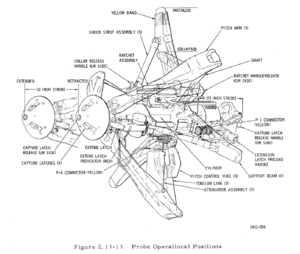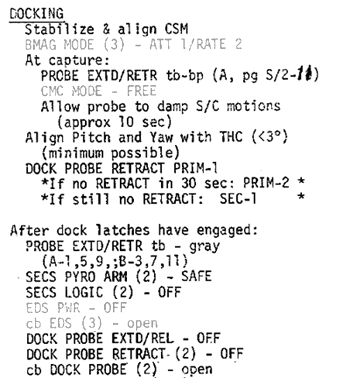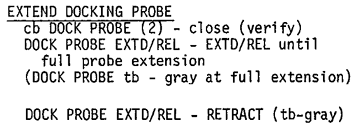Docking Probe: Difference between revisions
Jump to navigation
Jump to search
imported>Mark Grant (Info on gas retraction.) |
imported>Mark Grant m (→External Links: - experience report) |
||
| Line 24: | Line 24: | ||
==External Links== | ==External Links== | ||
* [http://ntrs.nasa.gov/archive/nasa/casi.ntrs.nasa.gov/19720018207_1972018207.pdf Apollo experience report: The docking system] | |||
* [http://history.nasa.gov/afj/aoh/aoh-v1-2-13-dock.pdf Apollo Operations Handbook: Docking and Transfer] | * [http://history.nasa.gov/afj/aoh/aoh-v1-2-13-dock.pdf Apollo Operations Handbook: Docking and Transfer] | ||
Latest revision as of 02:45, 29 November 2006

The Docking Probe is used to attach the Command Module to the Lunar Module or other spacecraft.
Operation
The probe first plugs into the attachment on the other spacecraft, then gas pressure is used to retract the probe into the CM, pulling the two spacecraft together into a 'hard dock' where the spacecraft will latch together with an air-tight seal and electrical connection.
A standard Apollo mission will have two dockings, one when the LM is extracted from the SIVB, the other when the LM Ascent Stage returns to lunar orbit. However, to maintain the redundancy standard of the Apollo flights, four gas charges are provided, allowing for a successful mission despite two failures.
Switches

Checklists


External Links